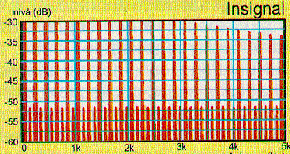
Original

Atrac: 1
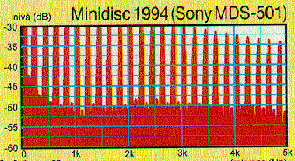
Atrac: 2
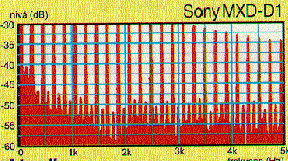
Atrac: 3(?)
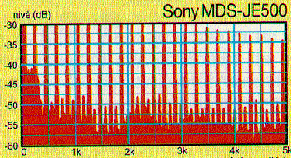
Atrac: 4
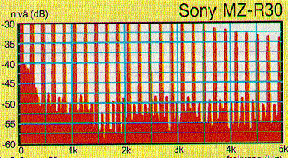
Atrac: 4 (low power variant?)
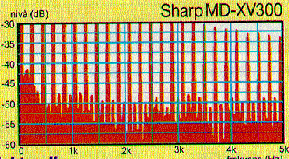
Atrac: Sharp 5.0
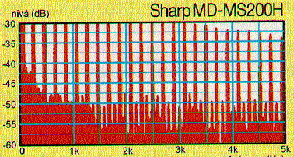
Atrac: Sharp 5.0 (low power variant?)
A 100 Hz square wave can reveal how well a data reduction system works, but not necessarily how much or little the process is audible.
The square wave has a spectrum of harmonics that extends through all of the audible frequency range. Here we show the content up to 5 kHz. In the graph we see that the bottom of the components in the spectra, the level of distortion, is more than 60 dB below the signal.
When recording to MiniDisc -- or any other media -- the level of distortion will increase. The available amount of data is not large enough for reproducing the signal with enough precision. In the first generation of MiniDisc recorders from 1993 one sees that the distortion was quite strong between 2 and 3 kHz, where the ear has its highest sensitivity.
In the next generation the distortion has become more even and its level has been lowered. In the machines of today the level has been lowered even further, and the unavoidable losses in resolution have been concentrated towards the lower frequencies where the ear should not hear them so easily.
On the other hand, it is difficult to see any significant differencies between the various modern machines that we have currently tested.
 Original |  Atrac: 1 |
 Atrac: 2 |  Atrac: 3(?) |
 Atrac: 4 |  Atrac: 4 (low power variant?) |
 Atrac: Sharp 5.0 |  Atrac: Sharp 5.0 (low power variant?) |